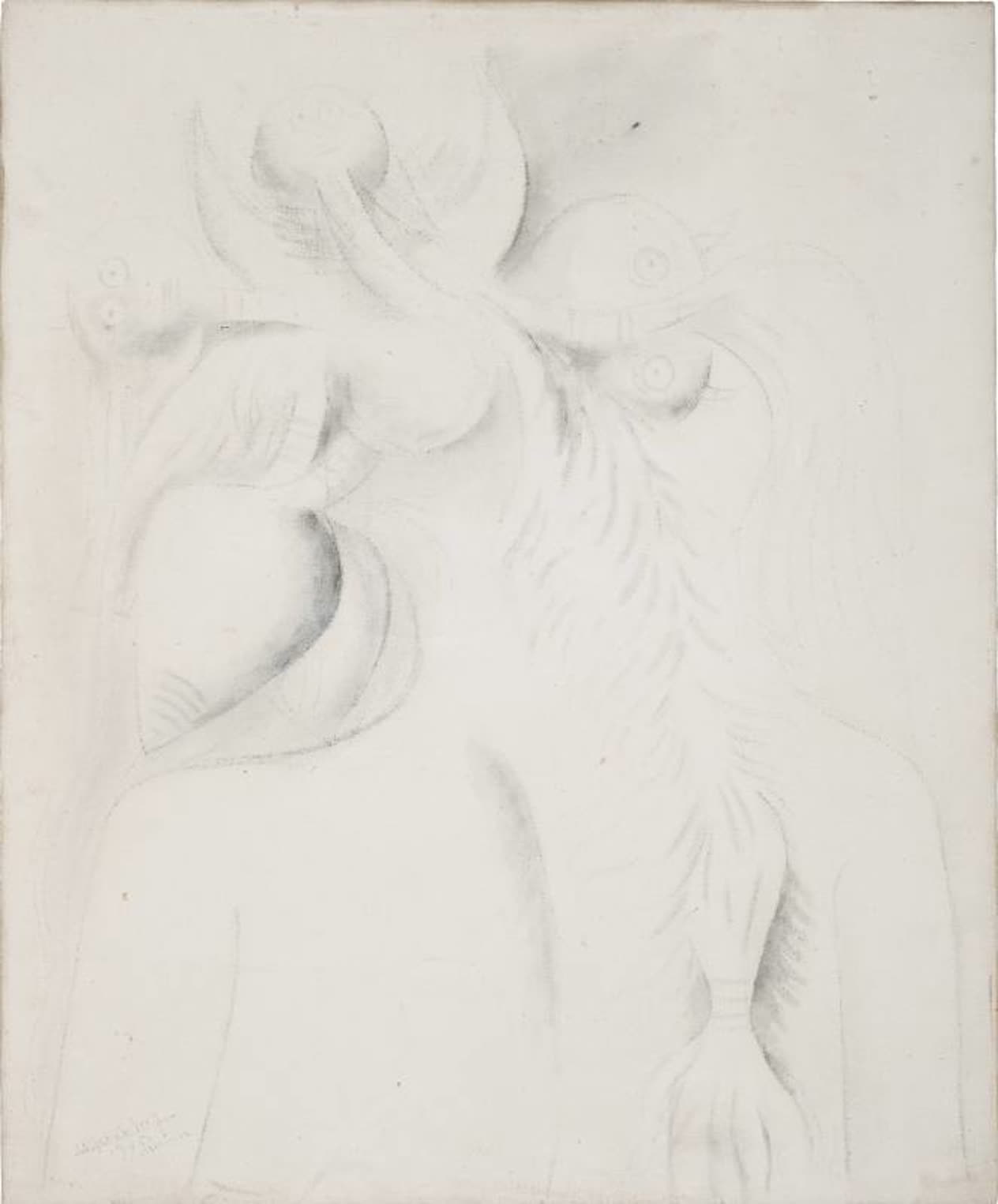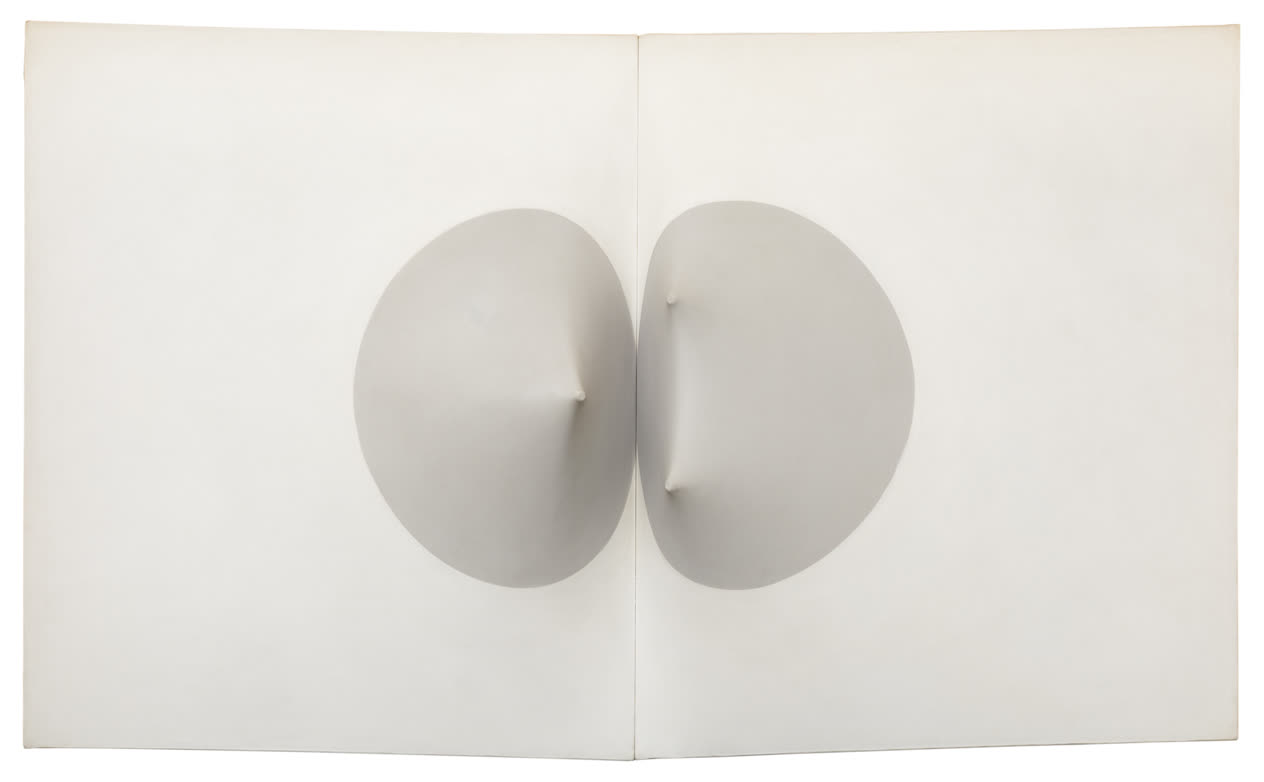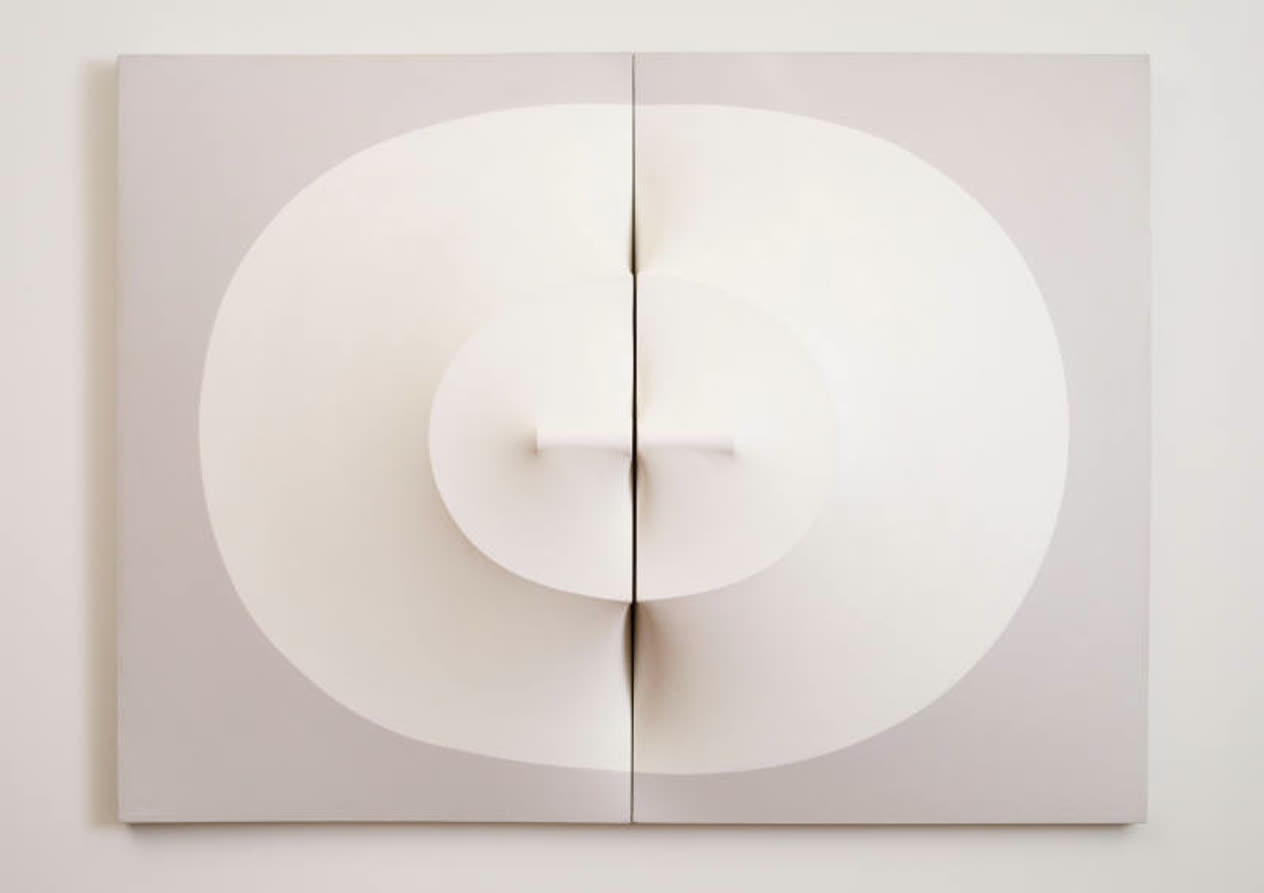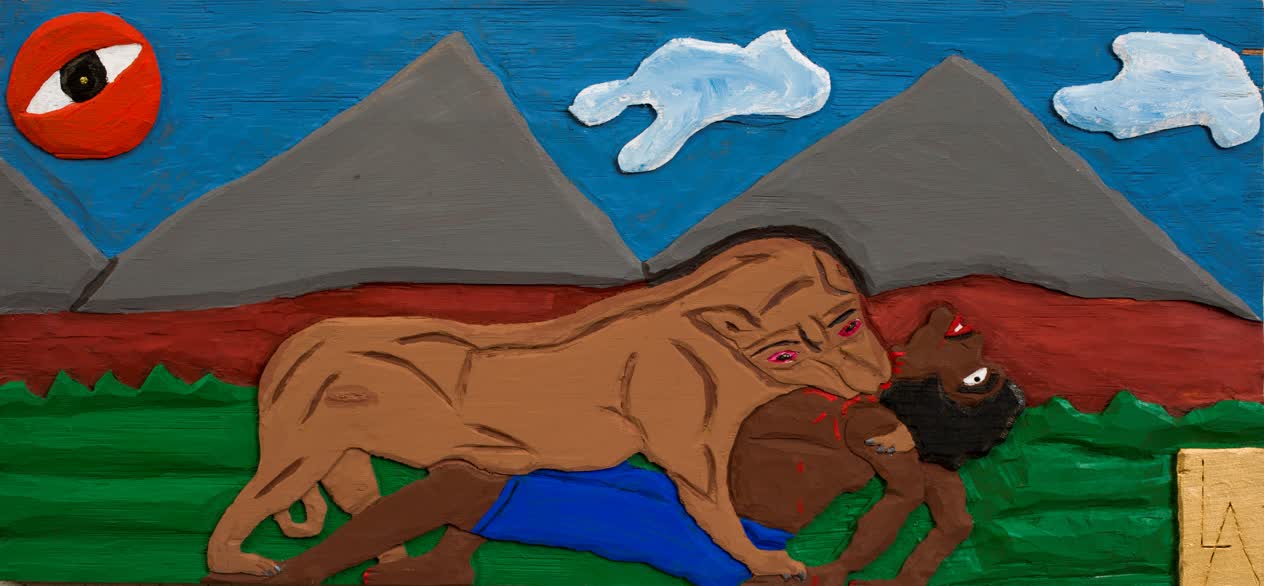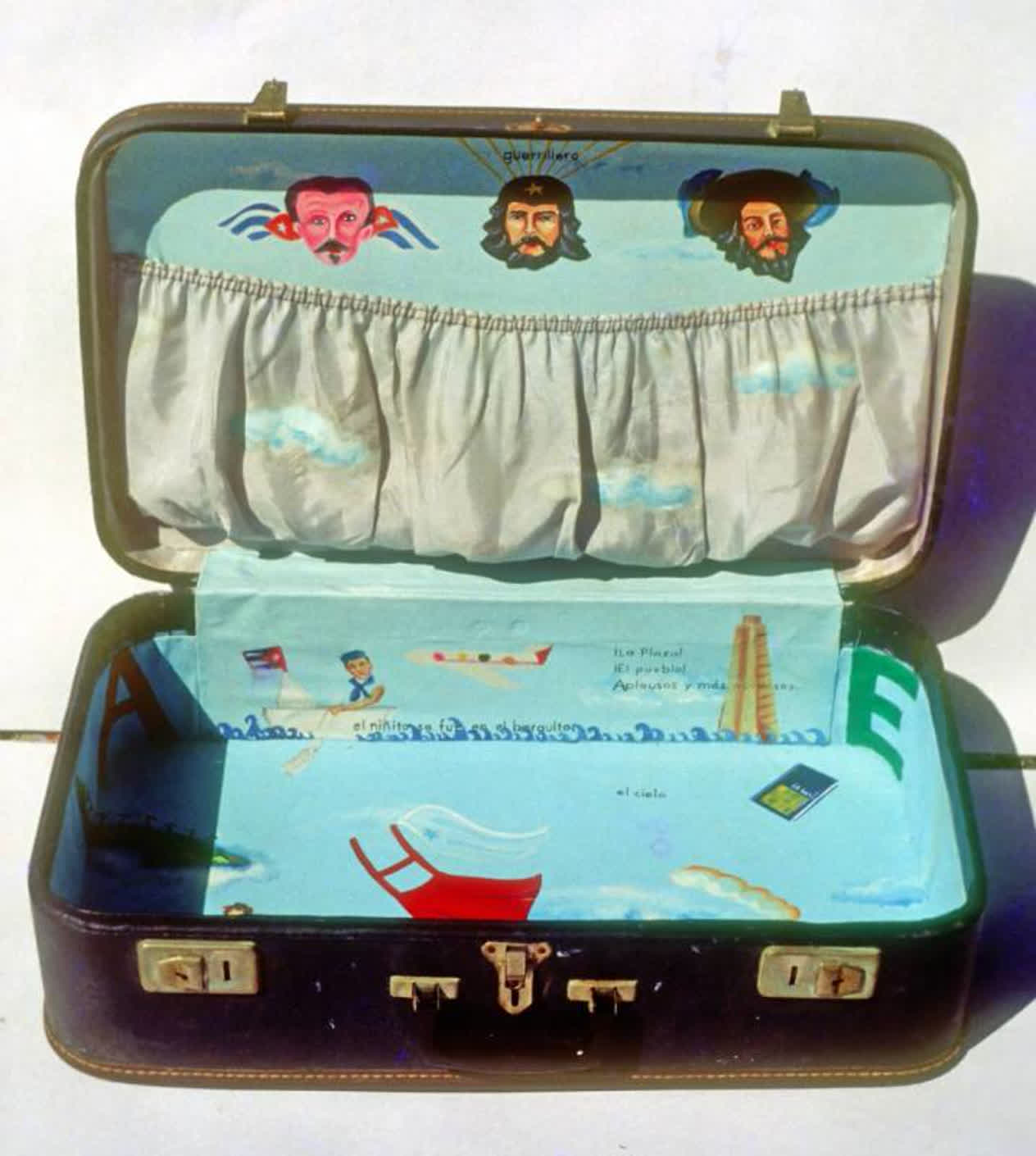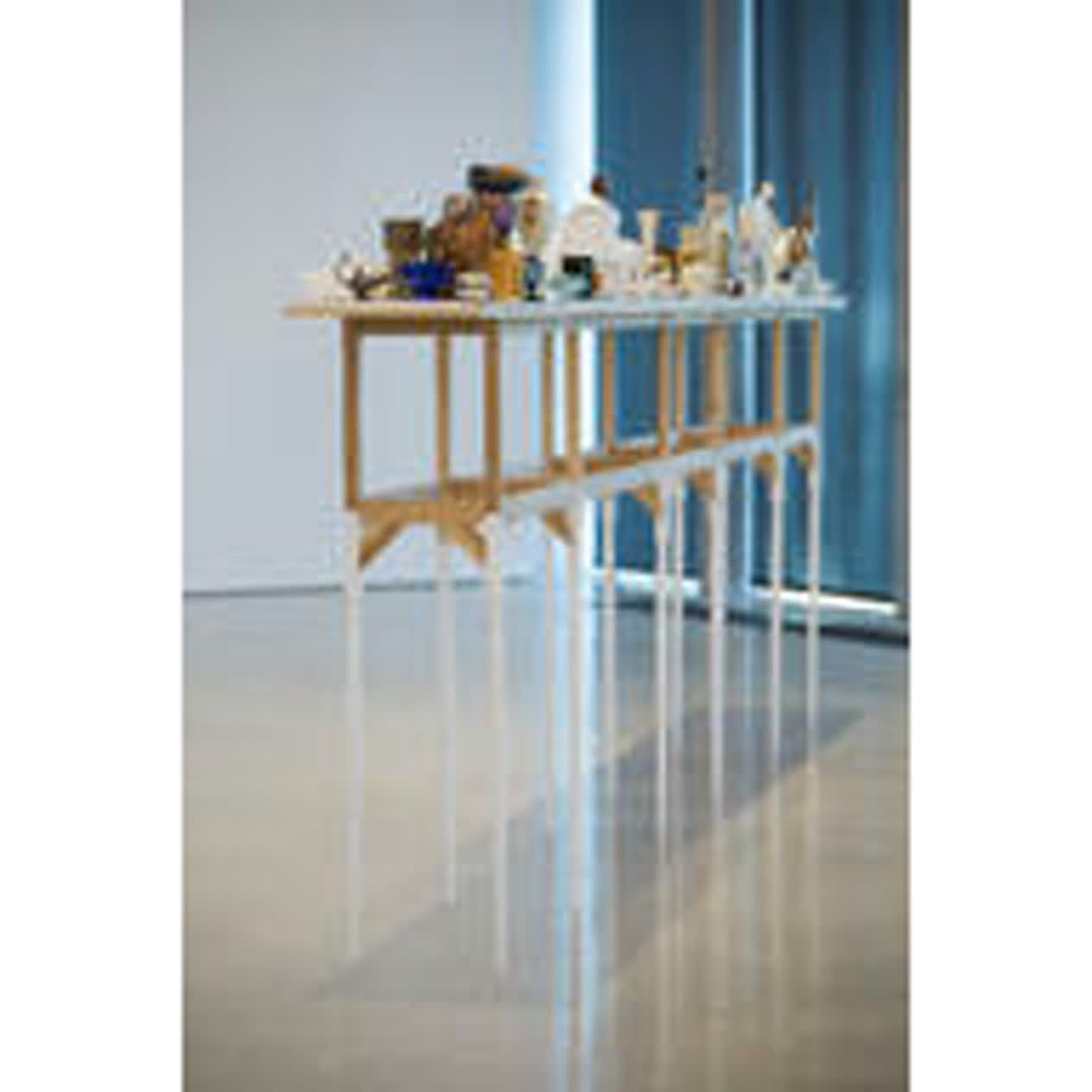Myrlande Constant Negre Danbala Wedo 1994–2019

© Myrlande Constant

Identification
Title
Negre Danbala Wedo
Production Date
1994–2019
Object Number
2020.080
Credit Line
Collection Pérez Art Museum Miami, museum purchase with funds provided by PAMM’s Collectors Council with additional contributions provided by Karen Bechtel, Evelio and Lorena Gomez, Jorge M. Pérez, and Craig Robins
Copyright
© Myrlande Constant
https://www.pamm.org/en/artwork/2020.080
Copy artwork link
Physical Qualities
Medium
Sequins, glass beads, and silk on cotton
Dimensions
38 3/4 x 48 1/8 inches
Visual Description
Negre Danbala Wedo, by Haitian artist Myrlande Constant is an artwork made up of sequins, glass beads, and silk embedded on a rectangular piece of cotton fabric. Measuring forty inches tall by fifty inches wide, or three and a third by four feet, Negre Danbala Wedo is but one example of Constant’s many flags, or drapo in Kreyol, inspired by her own Haitian culture.
Around the perimeter of the flag, a strip of blue floral cotton fabric is visible. Within this frame of the blue cotton fabric, small glass beads and sequins completely cover the remaining interior of the flag. The embroidered beading shimmers and sparkles as it reflects light back to the viewer, as if it were made of millions of tiny jewels. If one could imagine running one’s fingers over it, it would have the feeling of very small smooth raised bumps. Black beads form the background of this artwork. In the upper left of the flag, the words Negredam, Bhalah Hwedo are seen in red beading against the black background.
The flag consists of a scene in a forest with six human figures facing the viewer, standing over or seated surrounding a seventh person. They are observing a religious ritual in a forest-like setting. The seventh figure lies on their back, a snake coiled around their body, with their head facing the viewers left and their feet pointing to the right side of the flag. A Vodou healing ritual is being performed upon this person.
A forest of trees and plants surround the ongoing ritual. A leafless tree trunk made of gold sequins stands to left of one of the six onlookers. Three other trees are seen behind the six observers, each with slightly different shades of brown beading and green sequined leaves. The flag’s black sequined background does not have a ground line, so the characters appear suspended inside a forest of multicolored trees.
The six people surrounding the laying figure have different color beads to indicate different skin tones and clothing. On the left side of the artwork, a man seated on a small red stool is shown with grey beads serving as his skin tone, while another man closer to the center of the flag sits wearing a brimmed hat made of pink sequins and has skin made up of pale purple beads. All the six figures’ eyes face toward the man wrapped by a serpent laying toward the bottom center of the flag. Some of the observers carry various objects, like a white egg on a dish, a jug of milk, or a bottle of rum as important examples of Vodou practices. The laying figure rests upon a patterned fabric or rug with an intricate rectangular pattern of yellow and brown beading. He wears yellow shorts, while his legs and torso are exposed. His skin tone is a pale pink/peach color, while the snake has green and grey markings, coiling around his legs and lower body. The snake’s head is as large as a human’s, and its forked tongue nearly touches the head of the laying man. In the foreground in the lower left corner of the flag is a tree stump, with the artist’s last name, Constant, seen in red beads.






